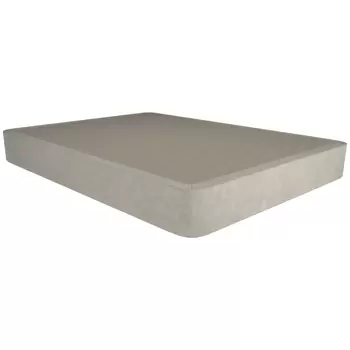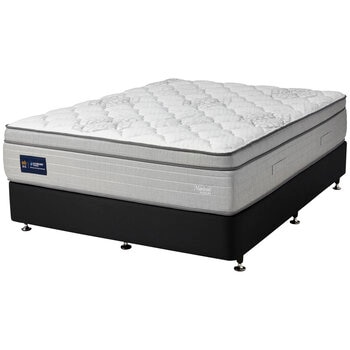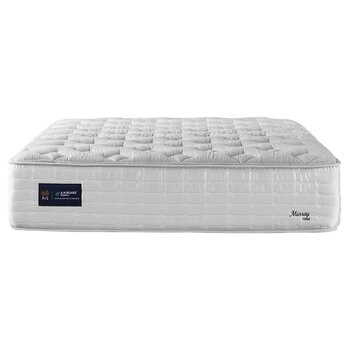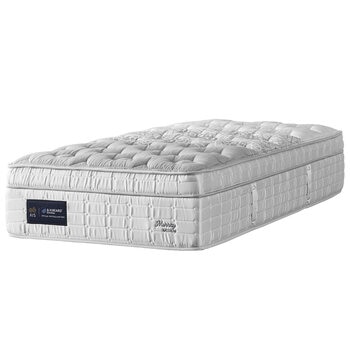Shop mattress by size
How to choose the right mattress
What to keep in mind
Choosing the right mattress is a pivotal decision that can profoundly influence your sleep quality and well being. Considerations such as mattress type, size, firmness and materials play a crucial role in meeting individual preferences and addressing specific sleep needs.
The right mattress not only supports the body’s natural contours but also helps alleviate pressure points, promoting a deeper and more restful sleep. A good mattress has an integral role in the sleep equation, so investing in one also means investing in your own physical and mental health.
Buying a mattress online
Online shopping for a mattress has many perks, all while from the comfort of your own home. It allows you to research, compare prices and models and decide at your own pace, without any added pressure from a salesperson. You will find detailed product descriptions, specifications and customer feedback and reviews to help you make a more informed choice.
Some mattresses also come compressed, also known as “mattress in a box”, making for a smooth delivery process and fast setup. At Costco Australia, you can expect a streamlined online shopping experience. With all mattresses listed on our website, the final price includes delivery, so you don’t have to worry about paying a hefty fee. Additionally, should you change your mind for any reason regarding the purchase of your mattress, you can always rely on our Return Policy.
Adjusting to a new mattress
Adjusting to a brand new mattress can be a gradual and individual experience. This is because your own body needs time to adapt to the new feel, not about the mattress itself. Allow yourself a few weeks to break in the mattress and take note of any changes in sleep quality, paying attention to your sleeping positions and spinal alignment.
It can take from 3 up to as much as 90 days to fully adjust, depending on factors such as the kind of mattress you previously owned (what your body is used to), new mattress structure and materials, firmness, etc. Usually, memory foam and hybrid mattresses take a little longer to adapt to, due to the nature and density of the material. With traditional spring mattresses, most people have no trouble adjusting quickly, since they are designed to provide support and adjust to your weight. Still, it can take some time to break in. Latex, used in many higher end models, has generally the shortest breaking in period, depending on whether it is natural or synthetic and if it is a hybrid structure.
The importance of sleep
Quality sleep is essential for overall well-being, impacting physical health, cognitive function and emotional stability. Adequate, restful sleep plays a crucial role in immune system function, memory consolidation and mood regulation.
Choosing a high quality mattress is a key factor in promoting a comfortable and supportive sleep environment. A good mattress will provide proper alignment, reducing the risk of back pain and enhancing sleep quality. It also minimizes sleep disturbance, allowing for uninterrupted rest.
Mattress longevity
A mattress should be replaced, on average, after 7 to 10 years of use. With that being said, many factors can influence a mattress lifespan. The longevity of a mattress often depends on its design, structure and manufacturing process. High quality mattresses are crafted with durable materials and expert construction, to withstand the test of time.
Regular maintenance, such as rotating your mattress and using a mattress protector, is also important to ensure durability. Many manufacturers also offer extended warranty, so you have a guarantee that the mattress will be free from defects during that period.
Mattress structure
What are mattresses made of?
Mattresses are designed with the purpose of providing comfort and support for a good night's sleep. The structure of a standard mattress typically consists of several layers, each serving a distinct purpose. The top layer, known as the comfort layer, is often made of materials like memory foam, latex, or polyurethane foam, offering a plush surface for relaxation.
The support layer beneath, also known as the "core" of the mattress, provides the necessary foundation and spinal alignment. It is commonly composed of materials such as innerspring coils, pocketed coils or high density foam, each type catering to specific sleep preferences. Some mattresses also feature a transition layer to enhance the overall feel and responsiveness, which you can learn more about in Mattress features. Each type caters to specific sleep preferences, ensuring a wide range of options for individuals seeking a customised sleep experience.
Latex
Latex mattresses are renowned for their breathable, responsive and durable characteristics. Although synthetic latex is available, natural latex is preferred, as it can be a more sustainable and eco-friendly choice made from a substance derived from rubber trees. It also has hypoallergenic properties, making an excellent option for those who suffer from allergies. Overall, latex mattresses provide contouring without the sinking feeling often associated with memory foam. Their open cell structure promotes airflow, helping regulate temperature during sleep. Often appreciated for its longevity, Latex often outlasts other mattress types. You will find that many luxury mattresses contain latex as part of their structure.
Springs
Spring mattresses are a traditional and widely used type of mattress that incorporates a coil system as its core support structure. There are two main types of spring mattresses: bonnell coils, which are hourglass shaped and connected with a spiral wire, and pocketed coils, individually encased in fabric pockets.
The structure of a spring mattress features a network of steel coils or springs, strategically placed to provide support and distribute weight evenly across its surface. They offer responsiveness and support, allowing the mattress to adapt to body weight and provide a degree of bounce. While spring mattresses may lack some of the pressure relieving properties found in memory foam or latex mattresses, they are valued for their durability, affordability and the cooling effect created by the natural airflow between the coils.
Memory Foam
Foam mattress models have gained immense popularity over the years. They excel in isolating motion, making them an excellent choice for couples. They also tend to alleviate pressure points, helping with joint or back pain. Some foam mattresses often come with varying firmness levels, catering to a wide range of sleep preferences.
Memory foam, developed by NASA in the 1960s, conforms to the body's contours in response to heat and pressure, providing a personalised and supportive sleep surface that helps alleviate pressure points and evenly distribute weight. While they may retain heat, newer technologies such as gel infused or open cell foam allow for enhanced breathability.
Hybrid
Hybrid mattresses seamlessly blend the best of both worlds, combining the support of traditional innerspring coils with the comfort of modern foam materials. They typically feature an innerspring core, for robust support and responsiveness, along with comfort layers of memory foam, latex or other specialised foams, for added pressure relief and body contouring.
This combination caters to a diverse range of sleep preferences, offering the bounce and breathability of innerspring coils while conforming closely to the curves of the body thanks to the adaptive properties of foam. Due to their versatile design, hybrid mattress tend to be a more expensive option as well as heavier because of the additional materials needed to create them. All in all, a high quality hybrid mattress is sure to provide the ideal balance between support and cushioning.




